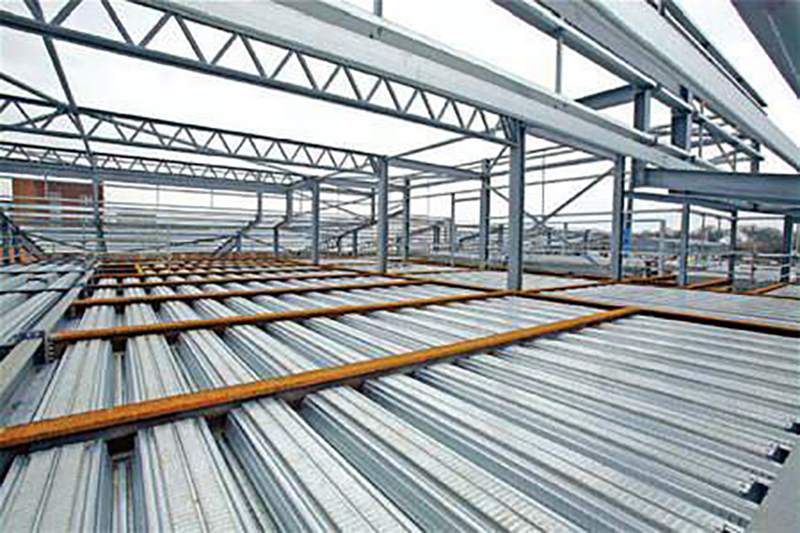In Civil and Structural Engineering, composite structures are typically the ones built with the combination of steel and concrete so that the resulting building component behaves as a single element. Composite construction aims at utilising the best properties of the different materials used and to deliver a structure that is better in all aspects. In the case of steel and concrete, the best properties would be the tensile capacity of the steel and the compressive capacity of the concrete.
Composite construction is a popular method of construction, is effective and delivers good performance. The benefits of composite construction include:
- Strength Related to Weight:
Composite structures are light in weight. Some materials are strong and heavy, such as steel. Other materials can be strong and light, such as bamboo poles. Composite materials can be designed to be both strong and light. That is why composites are used in buildings, airplanes, automobiles etc. Since aircrafts need a very high strength material at the lowest possible weight, using composites greatly reduces the fuel consumption thus making them energy efficient. - Corrosion Resistance:
Composites resist damage from all weather conditions, as well as from harsh chemicals that can damage other materials. Composites are good choices where chemicals are produced or stored like factories, industrial buildings etc. Outdoors, they provide resistance to severe weather and wide changes in temperature. - Design Flexibility:
Composites can be moulded into numerous complicated shapes more easily than other materials. This gives designers and architects the freedom to create almost any shape or form. Especially while designing architecturally creative building designs, the possibilities become vast with composites. - Nonconductive:
Composites are nonconductive, meaning they do not conduct electricity. This property makes them suitable for such items as electrical utility poles and the circuit boards in electronics. If electrical conductivity is needed, it is possible to make some composites conductive. - Low Thermal Conductivity:
While being non-conductive of electricity, composites are good insulators, i.e., they do not easily conduct heat or cold. As a result, houses and buildings are able to provide better insulation to its residents from the prevailing weather conditions. Also, except for steel and concrete, composites of other materials are used in buildings for doors, panels, and windows where extra protection is needed from severe weather conditions. - Durability:
The major reason why buildings are made with a combination of both steel and concrete is because steel performs best in tension and concrete performs best in compression. The dual properties make the structure resistant to the various loads like wind, seismic, etc., from various directions, thus increasing the durability of the structure. Moreover, composite structures provide high resistance to impact loads like blast from explosions, making buildings safer for the residents.
The use of Steel-Concrete Composite structures helps the customers get more carpet area and a durable structure at an affordable price. The benefits of designing Green Buildings had been perceived mainly in terms of total energy saving. Also, due to being fully recyclable, steel intensive construction provides improved environmental performance and the construction offers a sustainable development to the society with minimum consumption of energy, minimisation of waste and utilisation of renewable resources etc.






